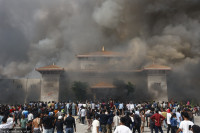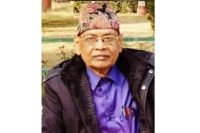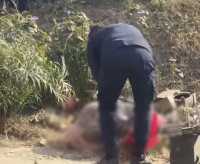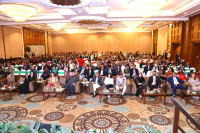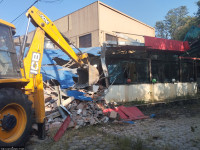Valley
Kathmandu starts temple work
Rebuilding of Kasthamandap Temple damaged by the earthquake on April 25, 2015 started on Monday.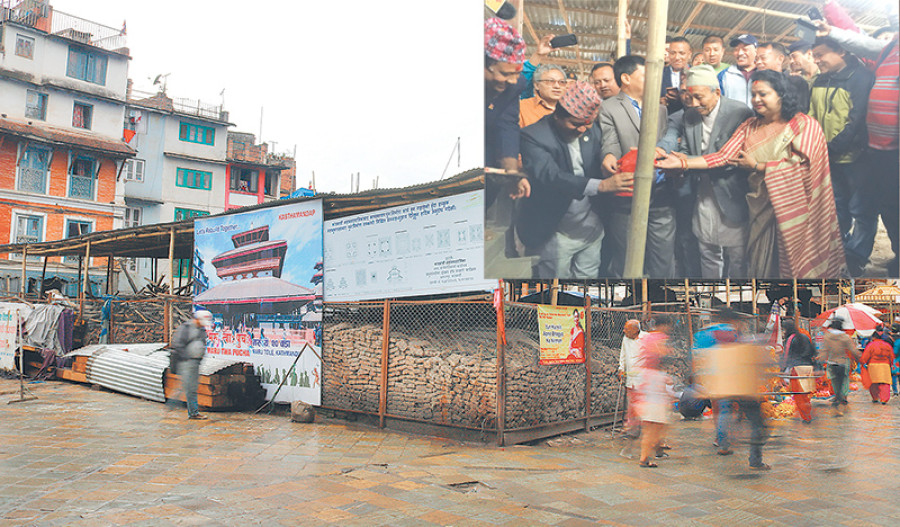
Rebuilding of Kasthamandap Temple damaged by the earthquake on April 25, 2015 started on Monday. The temple, one of the historic monuments situated in the heart of Kathmandu, figures among UNESCO world heritage sites.
Minister for Culture, Tourism and Civil Aviation Rabindra Adhikari laid the foundation stone of the quake-damaged structure.
Veteran Culture Expert and Litterateur Satya Mohan Joshi, Kathmandu Metropolitan City (KMC) Mayor Bidhya Sundar Shakya and National Reconstruction Authority (NRA) Chief Executive Officer of Yubraj Bhusal among other were present in the event.
KMC has taken the responsibility of resurrecting the structure. Minister Adhikari said the reconstruction would be completed within three years.“The KMC will initiate reconstruction process and co-ordinate with local bodies,” he said. The government plans to complete reconstruction of all major historic sites in Kathmandu before the beginning of Nepal Tourism Year in 2020, he said.A steering committee headed by KMC Mayor Bidya Sundar Shakya will govern the rebuilding process.
Kasthamandap is one of the oldest public buildings in Kathmandu Valley. It serves religious and secular functions for over a millennium. Many erroneously believe the wooden pavilion that Laxmi Narsingh Malla built it in 17th century. Other scholars place the structure as a 12th century monument.
Recent archeological studies resolve several myths and stories about the date of the construction of the temple. Newly discovered objects during excavations in the aftermath of the earthquake suggest it may have been built in the 7th century during the Lichhavi era. A joint excavation conducted by the Department of Archaeology and Durham University pushed Kasthamandap’s dates back by five centuries. It confirmed the foundations date back to the 7th century and established the building was at least 1,300 years old.
Even though the reconstruction process of Kasthamandap was initiated after the 2015 Gorkha earthquake, the process had stalled following intervention from citizens and cultural experts after the temple was being reconstructed using steel and concrete while the locals had demanded that originality is maintained to keep the essence of the historic process alive.
Work at heritage sites progresses at the snail’s pace with majority of such sites yet to be reconstructed. According to the data of National Reconstruction Authority (NRA), the agency mandated to carry reconstruction drive, the earthquake affected 750 heritage sites.Of the total, 133 sites have been destroyed while 617 sustained partial damage. The earthquake affected heritage sites in 20 districts out of 32 quake-impacted districts. The NRA data shows 100 heritage sites have been rebuilt so far. Progress is slow at most sites and work is yet to start at 324 sites.
Differences over reconstruction modality, intervention from locals in several sites and slow bureaucratic process among others have prevented the timely reconstruction of the iconic structure.Other crucial issue delaying the reconstruction of the heritage site is unavailability of adequate number of engineers, architects and skilled workers.




 7.12°C Kathmandu
7.12°C Kathmandu